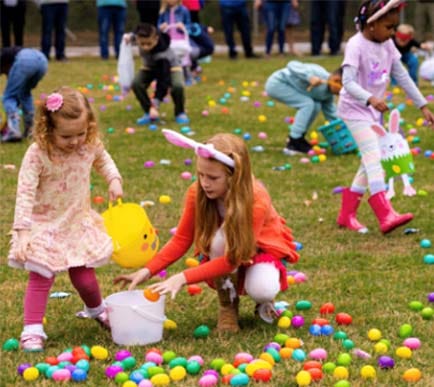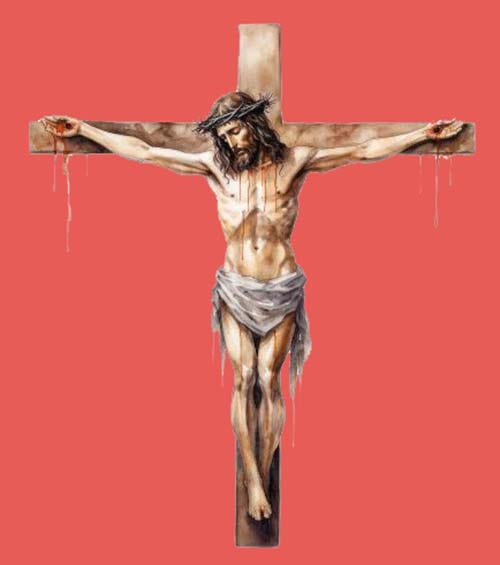🐇 So Why Does Peter Cottontail's Arrival Date Change Every Year?
Candy, Eggs & Jesus! And where did Easter come from anyway?
Confused about when Easter is every year? Aren’t we all.
You just have to Google it, but if you feel like thinking a bit you can figure it out yourself. Here goes!
The date of Easter is determined based on a lunisolar calendar system. In Western Christianity, Easter falls on the first Sunday after the full moon following the vernal equinox. (Huh?)
However, it's a bit more complex because the vernal equinox is fixed for astronomical purposes to March 21, regardless of variations in the actual astronomical event. Also, the full moon in question is not the astronomical full moon, but an ecclesiastical approximation, which has been traditionally calculated. (Huh?)
This means that Easter can fall anywhere between March 22 and April 25. The calculation of Easter can thus be summarized as:
Find the date of the vernal equinox, which is March 21.
Determine the next full moon after the vernal equinox.
Easter Sunday is the first Sunday following that full moon.
Oh, okay, now I understand.
It's important to note that different Christian denominati;ons use slightly different methods for calculating Easter, which can sometimes result in different dates for its observance between Western and Eastern Christianity.
The Orthodox Easter (Eastern) now falls anywhere between April 4 and May 8 and the Catholic/Protestant (Western) falls anywhere between March 22 and April 25. In rare instances, the dates align, and Easter is celebrated simultaneously. For example, both the Orthodox and Catholic Easter fell on the same day in 2010, 2011, and in 2014.
So you have to stick to your own kind to figure out which one you’re celebrating.
Stations of the Cross
If you grew up Roman Catholic, you can’t forget the pain of Jesus’ journey carrying the cross up Golgotha, the hill directly outside the Jerusalem city walls where Jesus was crucified.
We celebrated that that through the Stations of The Cross, also known as the Way of the Cross or Via Crucis, which commemorated Jesus's passion and death on the cross. There are 14 stations that each depict a moment on his journey to Calvary, usually through sacred art, prayers, and reflections.
First Station
Jesus Condemned to Death
Second Station
Jesus Carries His Cross,
etc…
And you would move to different statues on the Church wall, kneel and pray as you watched Jesus, the rabbi, pilaried, beaten, bloodied, a crown of thorns on his head, and finally excrucitatingly nailed to the cross by his own people.
But wait! There’s good news (have you heard it?) After three days he arises of the dead and ascends into heaven to sit at the right hand of God, The Father.
Leave it to the Catholics to terrorize the bejeebers out of young kids into learning their catechism. Who needed horror movies? (no hard feelings fellow Catholics)
But Why?
Most likely, Easter came from ancient rituals. The connection between Easter and pagan rituals is a topic of historical debate and interpretation. Some scholars suggest that the timing of Easter may have been influenced by earlier pagan celebrations, particularly those related to the spring equinox and fertility rites. Sounds very reasonable.
In fact, extremely reasonable. It seems obvious that early Christian leaders deliberately scheduled Easter to coincide with existing pagan festivals as a way to attract converts and to overlay Christian meaning onto pre-existing cultural practices. There were indeed festivals celebrating the arrival of spring and fertility around the time of Easter, such as the Anglo-Saxon festival of Eostre.
Additionally, some of the symbols associated with Easter, such as eggs and rabbits, have roots in pre-Christian fertility symbols. Eggs, for example, have long been associated with fertility and rebirth in many cultures, including ancient Egypt and Persia.
While there are historical connections between Easter and pagan rituals, the significance of Easter for Christians is focused squarely with the resurrection of Jesus Christ and the central tenets of Christian faith.
So Why The Easter Bunny?
The Easter Bunny, as a cultural symbol associated with Easter, has a multifaceted history that evolved over time.
One theory suggests that the concept of the Easter Bunny originated in Germany, where it was first mentioned in German folklore during the 16th century. The "Osterhase" or Easter Hare was said to be a hare or rabbit that laid eggs and brought them to children as gifts during the Easter season. This tradition was brought to America by German immigrants in the 18th and 19th centuries.
Another theory suggests that the Easter Bunny has roots in ancient pagan celebrations of spring and fertility. Rabbits are known for their prolific breeding habits, and they have long been associated with fertility and renewal in various cultures. Some scholars believe that the association of rabbits with Easter may have originated from pre-Christian fertility symbols and rituals that were later incorporated into Easter celebrations.
In the United States, the Easter Bunny became a popular symbol of Easter during the 19th century. The tradition of children receiving Easter baskets filled with candy, eggs, and other treats from the Easter Bunny became widespread, and that remains the main focus many Western countries today over religious observance.
The Easter Bunny has since become a beloved and iconic figure associated with Easter festivities, particularly in the context of children's celebrations. That friendly rabbit delivers colorful eggs and treats to children's homes or hides them for Easter egg hunts.
Overall, the history of the Easter Bunny is a blend of folklore, cultural traditions, and religious symbolism that has evolved over centuries to become an integral part of Easter celebrations in many parts of the world. Definitely here in the ole US of A.
So Christians, color up those eggs, eat some sweets and get yourself to the church on time to get yourself a first-class ticket to the rapture.









